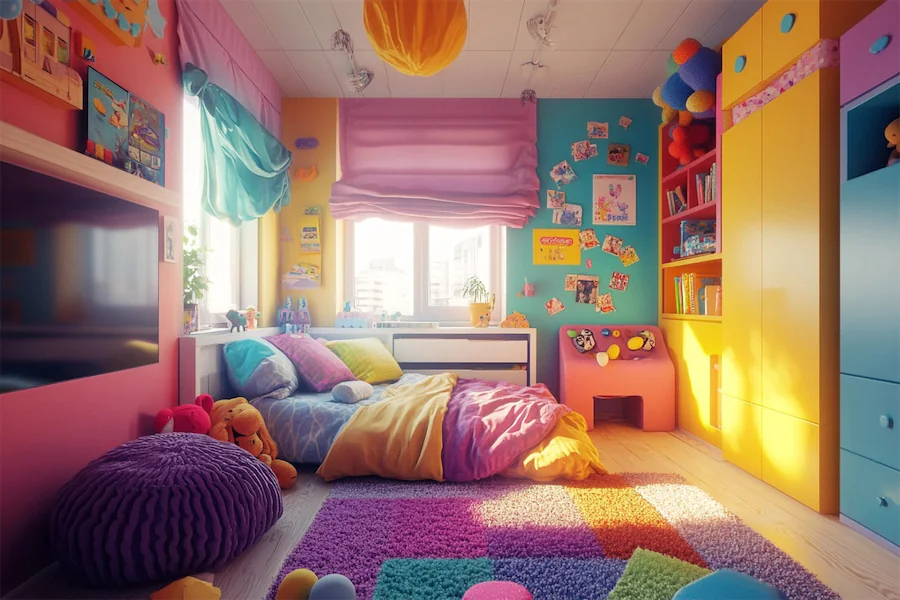Designing a colorful kid’s room infuses energy and creativity into a child’s personal space, fostering an environment that stimulates imagination and joy. By thoughtfully incorporating vibrant hues, playful patterns, and engaging decor, you can create a room that reflects your child’s personality and interests.
Introduction to Colorful Kid Rooms
A colorful kid’s room embraces a spectrum of colors to create a lively and inviting atmosphere. This design approach not only enhances the aesthetic appeal but also contributes to a stimulating environment conducive to play and learning.
History and Origins of Colorful Kid Rooms
The use of bright and varied colors in children’s rooms has long been associated with promoting creativity and happiness. Historically, children’s spaces were adorned with vivid hues to inspire and engage young minds, a practice that continues to evolve with modern design trends.
Key Features of Colorful Kid Rooms
- Vibrant Color Palette: Incorporate a mix of bold and cheerful colors to create an energetic ambiance. Utilizing complementary colors can add depth and harmony to the space.
- Playful Patterns: Introduce patterns such as stripes, polka dots, or geometric designs through wallpapers, rugs, or bedding to add visual interest and dynamism.
- Interactive Elements: Incorporate features like chalkboard walls or magnetic boards to encourage creativity and provide a canvas for self-expression.
- Personalized Decor: Add elements that reflect your child’s interests, such as themed artwork, customized name plaques, or display areas for their creations.
Applications of Colorful Design in Kid Rooms
- Accent Walls: Paint one wall in a bold color or apply a vibrant mural to serve as a focal point, balancing it with neutral tones on the other walls to prevent overwhelming the space.
- Colorful Furniture: Select furniture pieces in bright colors or repaint existing items to add pops of color throughout the room. This approach allows for flexibility and easy updates as your child’s preferences change.
- Textiles and Accessories: Utilize colorful bedding, curtains, and cushions to introduce variety and warmth. Layering different textures and patterns can create a cohesive yet dynamic look.
Considerations When Designing a Colorful Kid Room
- Balance: While incorporating multiple colors, ensure a harmonious balance to avoid visual clutter. Pairing bright colors with neutral backgrounds can achieve a cohesive design.
- Adaptability: Choose decor elements that can be easily updated as your child grows and their tastes evolve. Removable wall decals or interchangeable accessories offer flexibility for future changes.
- Functionality: Ensure that the room remains functional, with designated areas for sleep, study, and play. Incorporating storage solutions in fun colors can help maintain organization while enhancing the room’s aesthetic.
Conclusion
Creating a colorful kid’s room is an opportunity to blend aesthetics with functionality, crafting a space that is both delightful and practical. By thoughtfully selecting colors, patterns, and decor that resonate with your child’s personality, you can design a room that will be cherished for years to come.
